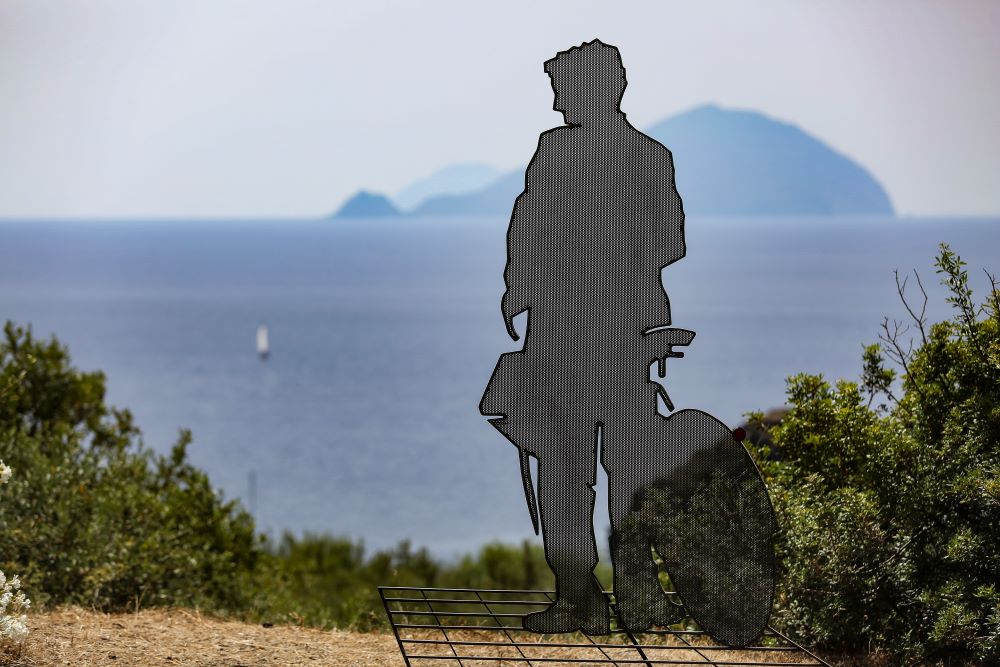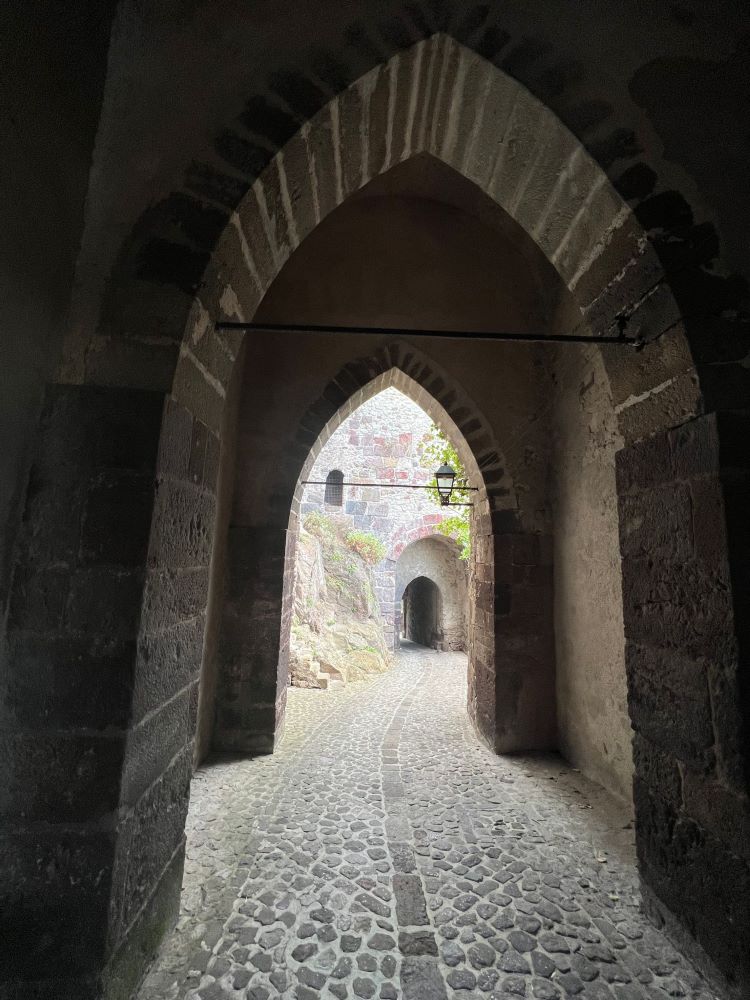The experience
Between Lipari and Salina: sea, sunsets and tastings retracing the traces of the ancestors
The legend of the women fishermen who magically made their boats fly, the memory of the men who worked at the pumice quarries on the island of Lipari, the rows of Malvasia wine, the cinematic echoes that resonate here at every corner: from Pablo Neruda’s walks in the Oscar-winning film “Il Postino” to the fiery passion between Ingrid Bergman and Roberto Rossellini that took place behind the scenes of “Stromboli”.
Welcome to the Aeolian Islands, the “seven sisters” Unesco heritage, one more beautiful than the other, welcome to this archipelago recognized by UNESCO as a World Heritage Site that today is a paradise for tourists, but which in the last decade of the nineteenth century saw a mass emigration, mainly determined by the crisis of the marketing of pumice in Lipari, and by the arrival of phylloxera, which in a few months destroyed almost all the precious vineyards of Salina.
We were fleeing from isolation, from poverty, from that sea that seemed like a prison. People fled to Australia, Argentina, Brazil, the United States and Canada in search of a better life. To tell this epic today there is, on the island of Salina, the Aeolian Museum of Emigration, founded in 1999, where visitors to the roots will have the opportunity to take part in a narrative journey that tells of farewells, hopes, sufferings, joys, nostalgia, integration, defeats, successes, redemption.
A visit that will provide access to a rich collection of original objects and papers, documents, letters, documentaries, photographs, time-worn yellowed clothes, suitcases, diaries, newspapers, tickets, passports, valuable materials on the life of the societies. All these testimonies represent the memory of the massive emigrations and tell future generations an important piece of the history of the Aeolians in the world. The advice of scholars who have dedicated their lives to genealogical research will allow us to delve into individual family histories.
All around is paradise: a crystal clear sea, breathtaking sunsets, unique scents and flavors. Lipari, the “capital” of the Aeolian Islands, houses one of the most beautiful archaeological museums in the Mediterranean, on its rock.
Salina is an island different from all the others: independent from the rest of the archipelago, dominated by the almost one thousand meters of Mount Fossa delle Felci, it is divided into three tiny municipalities that each have their own precise character: the liveliest Santa Marina Salina with the poetic hamlet of Lingua where a walk to the lighthouse and the brackish water lake separated from the sea by a thin strip of land is a must; the splendid Malfa, surrounded by green capers and vineyards, with its gourmet restaurants and the hamlet of Pollara from which you can enjoy a breathtaking sunset; the more hidden Leni, high up on a hill, which then descends to the sea with its village lying on the beach of Rinella.
A green, unspoiled oasis, far from the hectic modern life, Salina will offer visitors the chance to reconnect with a lush nature, jealously guarded by the islanders, with the land offering products of the highest level. Capers, excellent wines, Malvasia, traditions.
Shortly
Tour
SALINA
The discovery of the island will begin with a guided tour of the Aeolian Museum of Emigration. Every museum is a place of memory, but the museum of emigration is even more so. It provides an opportunity to remember how we were, reflect on the past and also understand the migrations of the present. Visitors will have the opportunity to take part in a narrative journey capable of reading the migration experience with a before and after in relation to the departure event.
It tells about the journey of life, the one that takes you out of the comfort zone of family ties in search of dignity to escape from misery. Adios, hopes, sufferings, joys, nostalgia, integration, defeats, successes, redemption. The museum describes all these emotions of life by recalling the transoceanic emigration of Aeolians who, between the 19th and 20th centuries, dramatically left the archipelago to seek their fortunes in Australia, Argentina, Brazil, the United States and Canada. The arrangement follows a chronological criterion and allows for a 360-degree reading of the migration experience. Exposes what has been generously donated by islanders and Aeolian communities about the migration experience.
A visit that will provide access to a rich collection of original objects and papers, documents, letters, documentaries, photographs, time-worn yellowed clothes, suitcases, diaries, newspapers, tickets, passports, valuable materials on the life of the societies. All these testimonies represent the memory of the massive emigrations and tell future generations an important piece of the history of Aeolians around the world.
After this dip in memory, the tour will continue with an itinerary entirely dedicated to the local product of excellence, the caper, with the “Salina Capers Tour.” A local expert, together with farmers, will introduce visitors to the processes of processing and transformation, leading up to product tasting. Before the advent of tourism, in fact, the caper was one of the cornerstones of the Aeolian economy. With antioxidant, anti-inflammatory and immunoprotective properties, it is an excellent natural remedy. From the caper plant one eats not only the buds, that is, the capers, but also the fruits, the “cucunci.” The Salina caper festival is celebrated every year on the first Sunday in June. Numerous tasting booths are set up during the occasion, with a wide range of caper dishes and other local products, including Malvasia. Industry professionals and the local community, year in and year out, strive to celebrate local products and offer visitors delicacies for the palate at this festival.
Free lunch on the excursion. After lunch, a nice walk, with a local guide, will lead to the discovery of the Punta Lingua lighthouse, a hamlet of Santa Maria Salina, where the Romans built a salt extraction plant, giving rise to the island’s name. A sensational sight, a corner of paradise, where lush nature puts on a show. Just from the Lighthouse it will be possible to catch a glimpse of the nearby islands of Lipari, Panarea and Stromboli. But in warm weather, there will be a chance for a dip from the pebble beach of Lingua. At the end of the walk, a fresh almond and mulberry granita, celebrated as among the best in Sicily, is a must. The dinner will lead to meetings with young restaurateurs who have invested here, choosing not to leave and making Salina’s products great ambassadors for the area. Not to be missed is the ricotta granita with eolian caper garnish. Overnight stay.
Experience Optional
An exceptional wine experience in Salina with a visit to a farm of excellence. Visitors can enjoy a tasting tour in the garden, based on local products; sun-dried tomatoes, capers, cheeses accompanied by orange and fig marmalades, while sipping excellent wines and local wines such as the highly appreciated Malvasia. An unmissable treat, an unmissable culinary and sensory experience.

LIPARI
The day begins with a tour of the historic center, including amazing churches and scenic viewpoints. The tour will continue with a visit to the Luigi Bernabò Brea Regional Archaeological Museum, dedicated to the leading figure in 20th-century archaeology. The museum exhibits some of the most important finds in the entire central-western Mediterranean basin. It is headquartered in the Castle, a natural fortress that dominates the town and preserves within it seven thousand years of history evidenced by artifacts of rare beauty such as the museum’s icon, the crater of “Dionysus and the Acrobat” dating back to the fourth century B.C. A journey to the roots of Mediterranean civilization. The rich tour takes in several buildings (the seventeenth-century Bishop’s Palace, the Acunto houses, the twentieth-century buildings) and is divided into six sections. Also very interesting are the collections devoted to underwater archaeology with artifacts found on the seabed of the Aeolian islands.
In the afternoon we move on to Pollara, where visitors can enjoy an atmospheric tasting in front of an unforgettable sunset. The sun dipping into the sea, a journey of unique emotions, to be experienced and photographed. Excellent local wines will be accompanied by tastings of traditional products. Dinner and overnight stay.
Optional experience: sunset visit to the Postman's House
Can you tell about the house in the film Il postino, on the island of Salina? “When you explain it,” Pablo Neruda/Philippe Noiret would say to Massimo Troisi, “poetry becomes banal. Better than explanations is the direct experience of emotions.” So here is an experience in Pollara, in the northwest of the island, amid the green of capers and olive trees, grown on the fertile soil nourished by ancient volcanoes. The pink-plastered house featured in the film, owned by artist Pippo Cafarella who created this unique color using wine must, is located here. The ruggedness of the overhanging rock, the stacks, the deep blue expanse of the sea fading into the horizon, in front of an unforgettable sunset.

Let us guide you on your journey to the Roots
Don't miss the opportunity to explore the places that have shaped your origins, request a tailor-made itinerary without obligation


